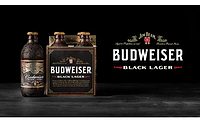Alcohol-free innovations hit the on-premise market
Nielsen highlights how more consumers are abstaining from alcohol and what it means for bars

As a mom of two sometimes not-so-great sleepers, coffee with my dinner has become a necessity in order to stay awake for the nightly bedtime routines. Although not the influence for all consumers, it seems as though non-alcohol beverages have become a popular choice for many Americans. As bars and restaurants see a growing sect of consumers abstaining from alcohol beverages, operators are getting creative with their drink menus in order to encourage consumers to visit the establishment but for an alcohol-free evening.
In an August Insights from New York-based Nielsen titled “Many Americans Are Looking For A Bar Experience Without The Buzz,” the market research firm highlights that this movement is being driven by millennial consumers.
“As with many of today’s consumer trends, millennials are driving the mindful drinking movement, as 66 percent say they’re making efforts this year to reduce their alcohol consumption — well above the average 47 percent among all U.S. consumers 21 and older,” the Insights states. “We started tracking this last trend year, when 54 percent of consumers said they abstained from alcohol at some point during 2018, with 50 percent citing health as the primary motivator.”
The market research firm notes that movements such as Dry January and Sober September have gained a following in the United States and don’t look to be decelerating anytime soon. Although this could spell trouble for the on-premise market, Nielsen highlights that the emergence of new beverage trends could help the channel still provide consumers the beverage and social experiences they crave.
“Despite how dim this might sound for bars and restaurants, demand for beverages with no and low-alcohol content is rising,” the Insights states. “Within bars and restaurants, no and low-alcohol beer is the fifth-fastest growing beer type in the U.S., and has a total value of $77 million. And at retail, non-alcoholic beverages are worth $7 billion more than just four years ago. In the last year alone, retail sales of non-alcoholic beverages have posted sales growth of $1.1 billion.”
The market research firm adds that bars and restaurants that do not adapt to this shift in consumption trends might be challenged in the future. Among the options that Nielsen suggests could open up a new portfolio while also driving a revenue stream are near beers, premium soft drinks, mocktails, kombuchas, botanical tinctures, and low- and non-alcohol options.
“Although soda, water and juice should always be staple offerings, they offer little revenue upside for bars and restaurants,” the Insights states. “It’s also unlikely that the sober nightlife crowd would enjoy an evening fueled by flavorless seltzers and club sodas. Rather, those seeking a night on the town are seeking experiences and premium offerings in the same way that alcohol drinkers are. Skillfully crafted mocktails, however, can offer uniqueness, health benefits and an appearance that fits the occasion — a bar experience without the buzz.”
As consumers preferences evolve, mixologists will be tasked with not just knowing what the latest up-and-coming cocktails are but also how they can use those skills to expand into the more adventurous non-alcohol market. I just hope they’ll have some coffee for me.
Looking for a reprint of this article?
From high-res PDFs to custom plaques, order your copy today!







